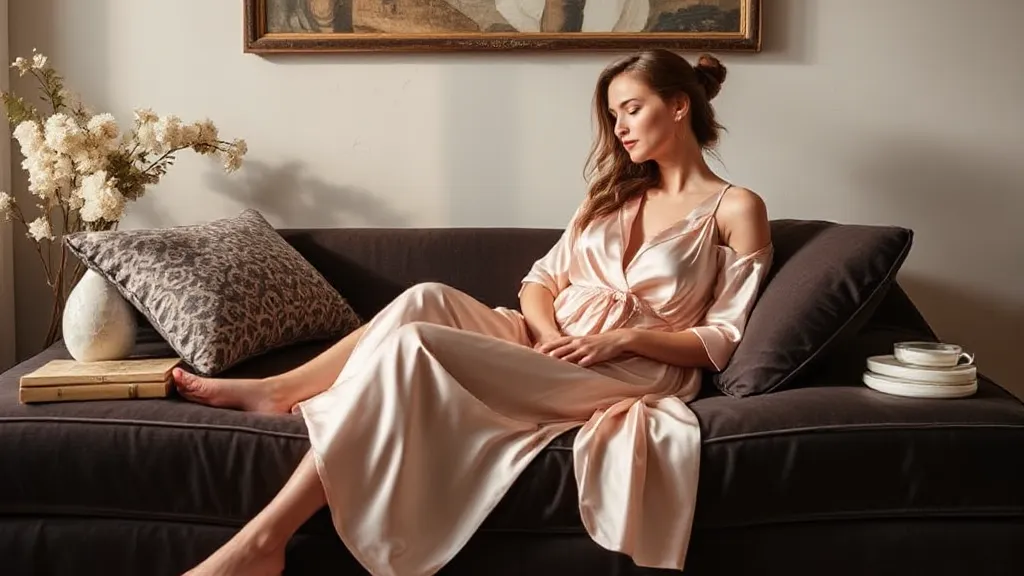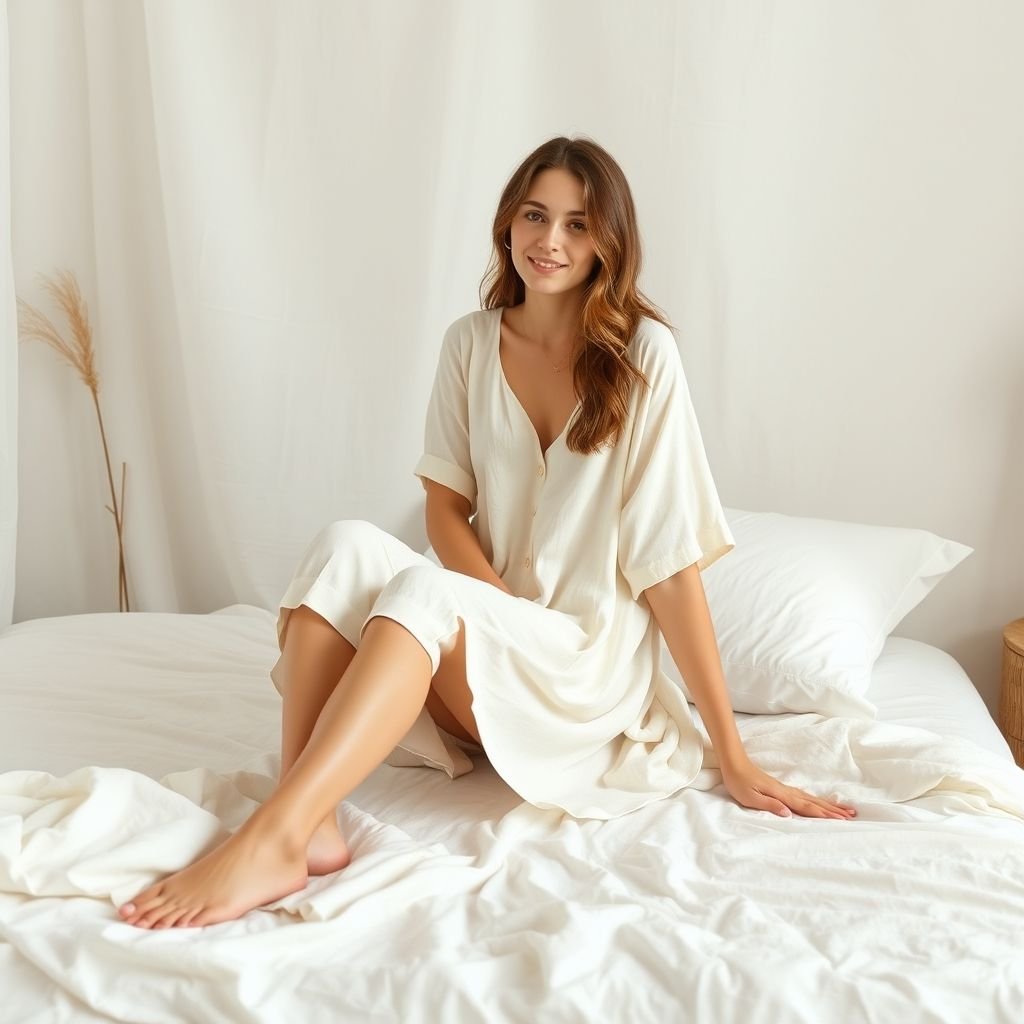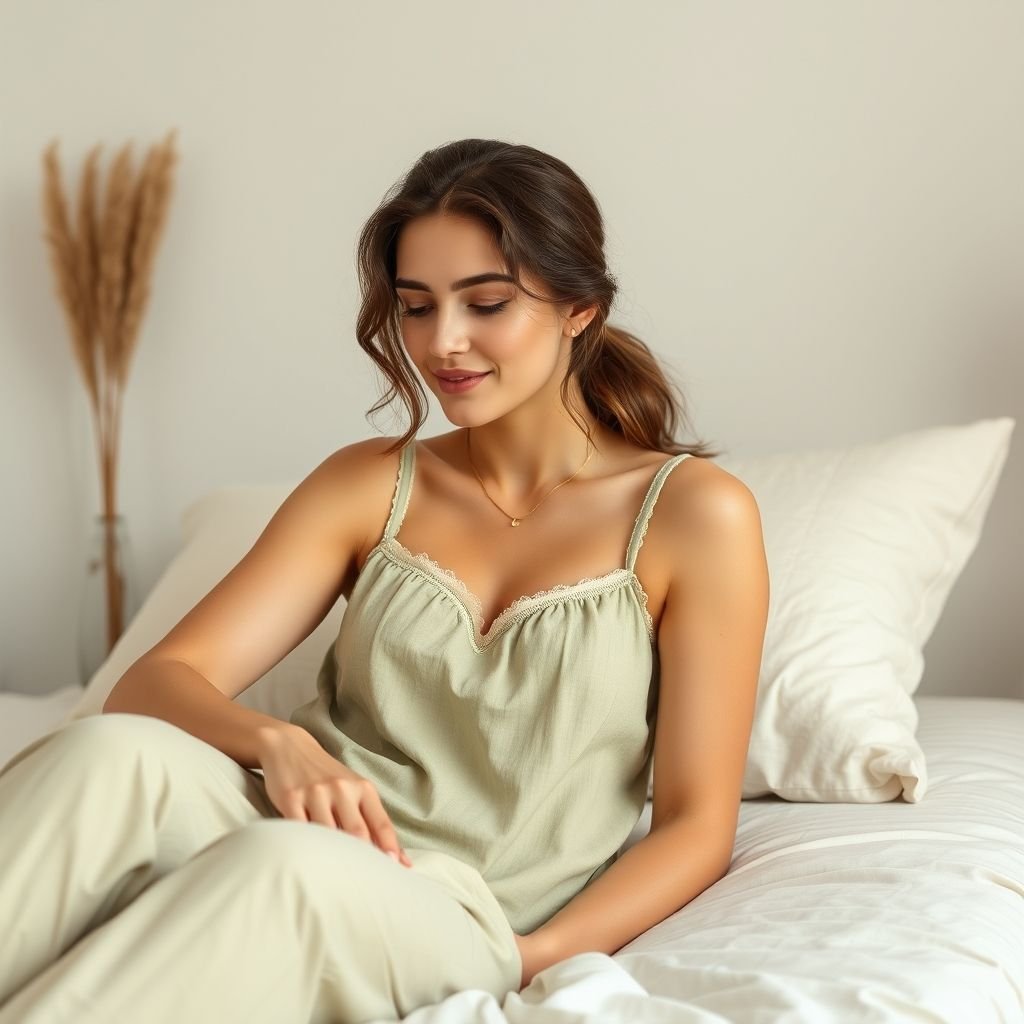Getting a good night’s sleep isn’t just about the right mattress or a calming bedtime routine—it’s also about what you wear to bed. The fabric of your sleepwear plays a crucial role in regulating body temperature, wicking away moisture, and ensuring overall comfort throughout the night. With a myriad of options available, choosing the best fabric for sleepwear can be daunting. This guide will help you navigate through the top fabrics, their benefits, and how to select the perfect one for your needs.
Understanding the Importance of Sleepwear Fabric
The fabric of your sleepwear can significantly impact your sleep quality. Breathable materials can help regulate body temperature, while moisture-wicking fabrics keep you dry and comfortable. Additionally, the right fabric can prevent skin irritations and allergies, contributing to a restful night’s sleep.
Top Fabrics for Sleepwear
1. Cotton

Cotton is a classic choice for sleepwear due to its softness, breathability, and affordability. It’s ideal for warm climates and those who tend to overheat at night.
Pros:
- Highly breathable and lightweight
- Soft against the skin
- Hypoallergenic, suitable for sensitive skin
- Easy to wash and maintain
Cons:
- Absorbs moisture but doesn’t wick it away, which can lead to dampness
- May wrinkle easily
2. Bamboo

Bamboo fabric is gaining popularity for its eco-friendly properties and luxurious feel. It’s known for its moisture-wicking abilities and temperature regulation.
Pros:
- Excellent moisture-wicking properties
- Naturally antibacterial and hypoallergenic
- Soft and silky texture
- Sustainable and environmentally friendly
Cons:
- Can be more expensive than cotton
- May require gentle washing to maintain softness
3. Silk

Silk is synonymous with luxury. It’s a natural protein fiber that feels smooth against the skin and offers excellent temperature regulation.
Pros:
- Naturally hypoallergenic
- Regulates body temperature effectively
- Reduces friction on the skin and hair
- Adds a touch of elegance to sleepwear
Cons:
- Requires delicate care and often hand washing
- Higher cost compared to other fabrics
4. Modal

Modal is a semi-synthetic fabric made from beech tree pulp. It’s known for its softness and durability.
Pros:
- Extremely soft and smooth
- Resistant to shrinking and fading
- Breathable and moisture-wicking
- Eco-friendly production process
Cons:
- Can be more expensive than cotton
- May require special care during washing
5. Linen

Linen is made from flax fibers and is ideal for hot climates due to its breathability.
Pros:
- Highly breathable and moisture-wicking
- Durable and becomes softer with each wash
- Naturally antibacterial
Cons:
- Can feel rough initially
- Prone to wrinkling
6. Flannel

Flannel is a soft, woven fabric typically made from cotton or wool. It’s perfect for colder climates.
Pros:
- Provides warmth and insulation
- Soft and cozy feel
- Durable and long-lasting
Cons:
- Can be too warm for hot climates
- May pill over time
7. Tencel (Lyocell)

Tencel is a sustainable fabric made from wood pulp, known for its softness and moisture management.
Pros:
- Silky smooth texture
- Excellent moisture-wicking capabilities
- Eco-friendly production process
- Resistant to wrinkles and shrinking
Cons:
- Can be more expensive than other fabrics
- Requires gentle washing
Choosing the Right Fabric for Your Needs
When selecting sleepwear, consider the following factors:
Climate
- Hot climates: Opt for breathable fabrics like cotton, bamboo, or linen.
- Cold climates: Choose insulating materials like flannel or silk.
Skin Sensitivity
- For sensitive skin, hypoallergenic fabrics like bamboo, silk, or organic cotton are ideal.
Maintenance
- If you prefer low-maintenance fabrics, cotton and modal are easy to care for. Silk and Tencel may require more delicate handling.
Personal Preference
- Consider the feel of the fabric against your skin. Some prefer the crispness of linen, while others favor the softness of modal or bamboo.
Conclusion
Choosing the right fabric for your sleepwear is essential for a comfortable and restful night’s sleep. Whether you prioritize breathability, softness, warmth, or sustainability, there’s a fabric that meets your needs.
For more fashion inspiration, check out our guide on Dress to Impress : Women Outfits for Special Occasions, How to Pick Shoes That Complement Your Outfit and Women Outfits Inspiration: Outfit Ideas for Parties.
Or by exploring ElleSilk.com, DIANA

1 thought on “How to Choose the Best Fabrics for Sleepwear”